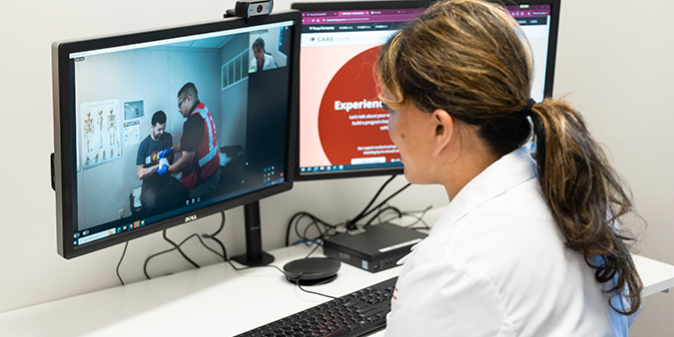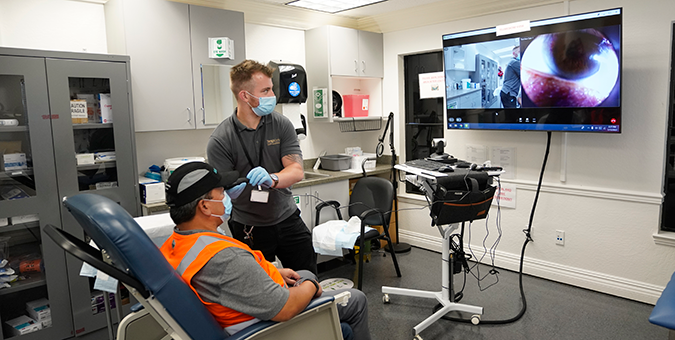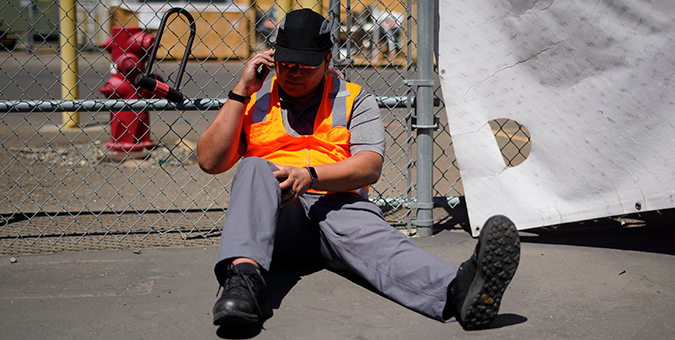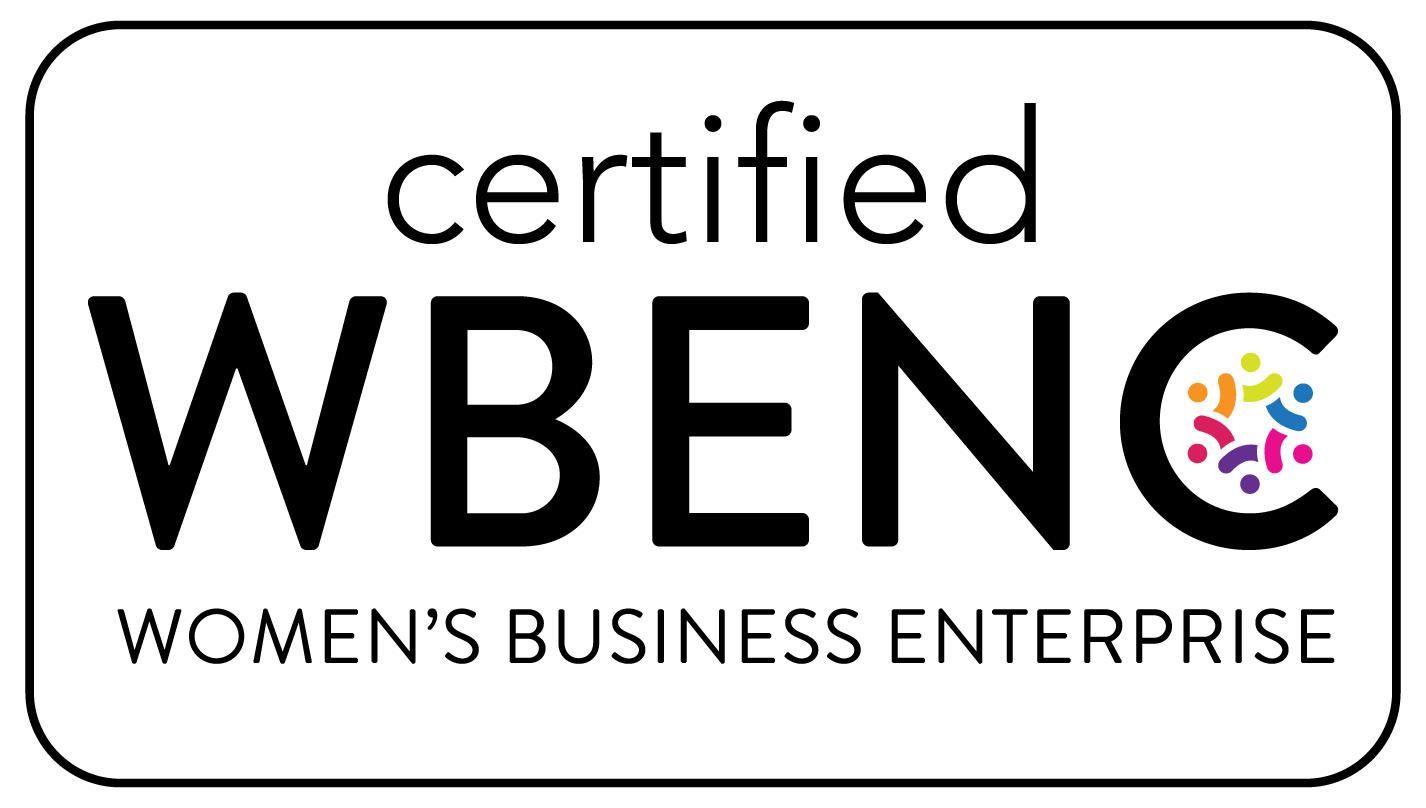A Guide to Using Telemedicine in Occupational Healthcare

How can your organization benefit from telemedicine for workplace health? Read on to learn about the benefits of virtual care and how to implement it best.
Author: Joseph Christian
January 7, 2025
Occupational health programs are critical to protecting the health and productivity of employees. Today, the landscape of both business and occupational health is evolving in reaction to technologies that make remote work and remote care a new reality. Many organizations are turning to telemedicine to provide wider access to care at any place or time. But as with any occupational medical service, its effectiveness hinges on how well it’s implemented.
Most providers can offer telemedicine, but the job of EHS professionals is to ask, “Are you leveraging telemedicine to its fullest potential in your occupational health program?” Let’s explore how to get the most out of telemedicine.
What Is Telemedicine?
Simply put, telemedicine is the delivery of healthcare services through digital communication technologies – mainly via a video call, a telephone conversation, or some combination of the two. In occupational healthcare, it provides a way for an organization to improve employee access to injury triage, treatment plans, follow-ups, injury prevention services, and medical consultations without the need to visit a clinic in person.
It is also important to understand that occupational healthcare vendors have different ways of delivering telemedicine. Some operate it as a video chat, some have a telemedicine station, and others only offer a phone conversation and call it telehealth.
At CAREonsite, we use the term broader CAREonsite Virtual to refer to a comprehensive solution that includes the following services.
Telephonic Nurse Triage (TNT): A telephone triage service that immediately connects injured employees to a nurse to care for work-related injuries with mobile phone video support as needed for injury triage and support.
Telemedicine: A HIPAA-compliant virtual platform that includes an expandable telemedicine station with diagnostic instruments placed directly at a worksite.

What Kind of Virtual Care Does Your Business Need?
Virtual occupational healthcare isn’t a one-size-fits-all solution; its effectiveness depends on the specific needs of your business and workforce. It’s particularly valuable in situations where immediate access to healthcare can prevent minor issues from escalating into major ones.
Some common situations are:
1-Dispersed workforces: When employees work alone or in small groups with no safety manager present, virtual care provides immediate access to professional medical triage and expertise that guides injured employees in first-aid self-care.
2-Remote worksites/underserved locations: In industries like construction or mining, where worksites are often far from medical facilities, virtual care provides quick access to healthcare professionals, reducing the time and cost associated with traveling to a clinic.
3-Shift work: For businesses operating 24/7, virtual care ensures that healthcare is available even during off-hours, reducing absenteeism and helping employees manage health issues before they become critical.
4-High-risk environments: In environments where injuries are more common, having immediate access to medical advice through virtual care can prevent complications and ensure that employees receive the right level of care at the right time.
Expert Tip:
There are numerous ways virtual occupational healthcare can enhance your occupational health program. Consult with the experts at CAREonsite – we have decades of experience tailoring virtual solutions to the unique needs of businesses of any size.
Top Benefits of Utilizing Virtual Care in Occupational Health Programs
Improved Health Outcomes:
Telemedicine and TNT reduce the waiting time for medical consultations, allowing employees to receive care when they need it most. This immediacy focuses on using first aid techniques that prevent unnecessary clinic visits and ensure that minor issues are addressed before they worsen.
Cost-Effective Care:
For businesses with remote or underserved employees, telemedicine and TNT offer a cost-effective way to provide necessary healthcare services. It fills gaps in care options, ensuring that all employees have access to quality healthcare.
Improved Onsite Care:
An escalation pathway allows first aid and self-care strategies to be used onsite in collaboration with the employer, reducing Total Recordable Incident Rates (TRIR) and offsite medical expenses.
Reduction of Risky Medical Decisions:
Telemedicine and TNT help employers make informed decisions about whether an injury requires emergency care, onsite first aid, or a visit to a local clinic or ER.
Support for Employer First Responders:
Virtual care provides a medical backup for first responders, ensuring that they have expert support when making care decisions.
Immediate Access to Medical Providers:
Employees can quickly connect with a medical provider, with evaluations often facilitated by an Occupational Health Technician (OHT) or trained first responder onsite.

Things to Remember When Choosing a Vendor
Selecting the right virtual care (telemedicine and TNT) provider is crucial to the success of your occupational health program.
Here’s what to consider:
Experience and Outcomes Data: Look for vendors with a proven track record and data to back up their claims of success.
Alignment with Health and Safety Culture: The vendor’s approach should align with your organization’s health and safety culture and objectives.
Scalability: Ensure the vendor can scale their services to meet the growing or changing needs of your business.
CAREonsite Is Here to Help
Implementing virtual solutions in your occupational health program can significantly enhance the health and safety of your workforce. At CAREonsite, we specialize in helping businesses integrate telemedicine and TNT effectively. Contact us to learn more about how we can support your occupational health needs.
- careonsite
- compliance
- EH&S
- health and safety
- health and safety programs
- health outcomes
- High-risk environments
- HIPAA-compliant
- HSE
- immediate workplace care
- improved access
- industrial athlete
- injury management
- injury prevention
- occupational health
- occupational healthcare
- positive outcomes
- safety
- strength training
- telehealth
- telemedicine
- telephonic nurse triage
- TNT
- virtual
- virtual care
- virtual injury prevention
- work-related injuries
- worker safety

